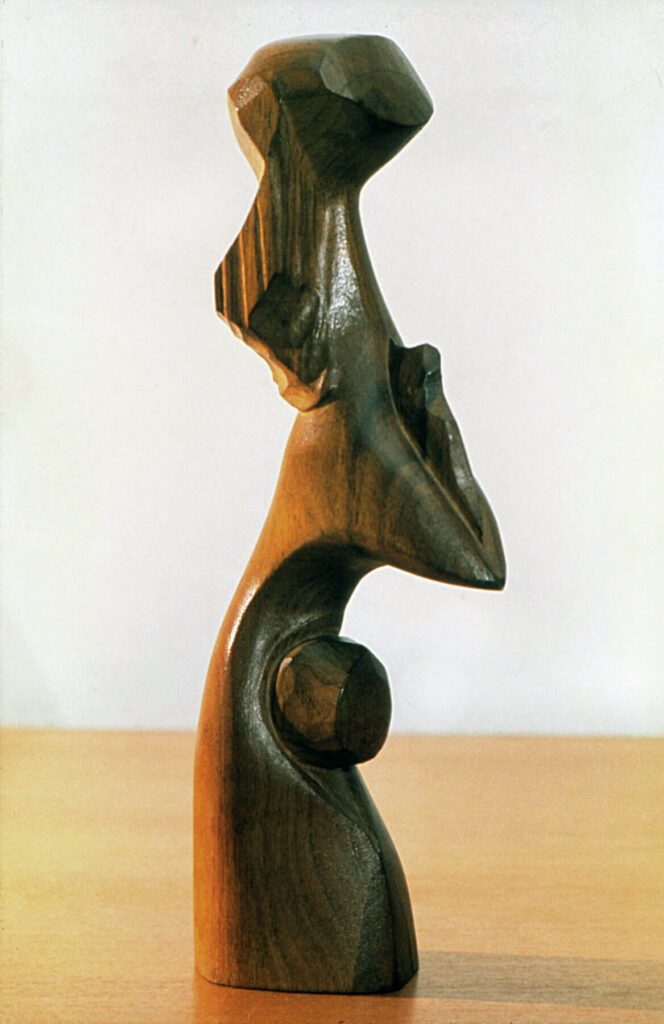For a brief period in the winter of 1951, Borduas interrupted his two-dimensional work to devote himself to wood sculpture, producing nearly a dozen of these small statues. Most are named after countries—United States, Japan, Egypt, Greece, Russia, England, Canada—obscuring an inherent eroticism. The Nun, which seems to describe a Catholic nun in prayer, is more directly erotic and controversial. By giving volume to the objects in his Automatiste paintings, Borduas opened up the field of non-representational art in Quebec to include sculpture.
Paul-Émile Borduas’s Abstract Revolution
-
Paul-Émile Borduas, The Nun (La religieuse), 1951
Wood sculpture, H 31.6 cm, private collection
